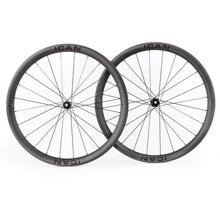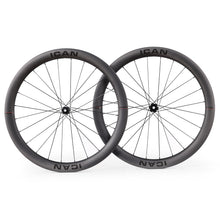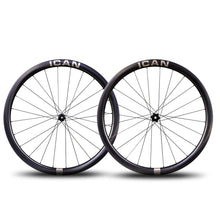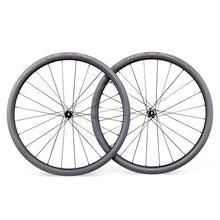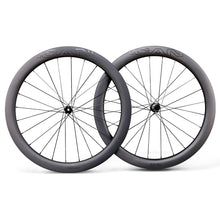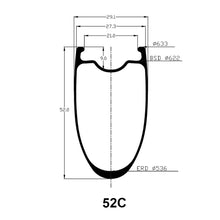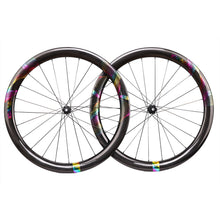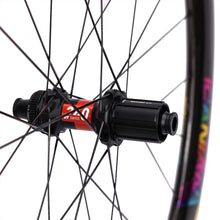News
Everything you Wanted to Know About Headsets but Were Afraid to Ask
If you want your bike to turn, you’ll need a headset. Not all headsets are the same, which you might already know if you’ve gone into a bike shop to buy one. There are a lot of different styles of headsets, and knowing what they are can save you a lot of issues in the long run.
Threaded headsets

Threaded headsets are the classic bike headset, and used to be the only way you get a headset. They are called threaded headsets as the headset screwed onto a thread on your forks. They are usually to be found in a 1” diameter size, although a few mountain bikes were released with 1 1/8” sized threaded headsets. The 1” size uses a 7/8” quill stem, and the 1 1/8” size uses a 1” quill stem.
All threaded stems use a bearing cup that is pressed into a bike’s headtube. The bearings sit in these cups, with the lower headset bearings being supported by a crown race on a fork, and the upper bearings being held in place by the threaded cap.
You now tend to only find threaded headsets on cheaper bikes and on retro bikes.
Threadless headsets

Threadless headsets (sometimes called by their brand name, Aheadset), you might be able to work out, are headsets that don’t need to be threaded onto your forks. Instead, a star fangled nut, or an expander bung is placed inside the fork steerer, and this acts as the anchor for when you are tightening down tension.
In its original design, like the threadless headset, the bearing cups were pressed into the head tube. You’ll find the 1 1/8” threadless headset on many cheaper bikes and a lot of bikes from the 1990s onwards.
Semi-integrated headsets

Semi-integrated headsets are another one of those styles with many monikers. You’ll find them also listed as zero-stack, ZS, or as internal headsets. Semi-integrated headsets take their design from threadless headset but do away with the bearing cups.
Instead of bearing cups the semi-integrated headset has bearings that press directly into the frame, with a small part of the bearing sitting above and below your headtube as a small lip. There are many different styles of semi-integrated headsets, and they can not be swapped around. You’ll need to know what style your bike takes if you need new bearings.
Integrated headsets

Integrated headsets go a step further than semi-integrated headsets, and your frame will have a headtube designed to hold the bearing. You should literally be able to drop the bearing in, and then remove it with your fingers. You won’t be needing any fancy tools to deal with an internal headset.
As with the semi-integrated headsets, these headsets are not interchangeable with other internal headsets; you’ll need to make sure you get the correct one for your frame.
Tapered or straight?

Once you’ve figured out what style of headset you’re after you’ll need to work out if you have a straight or tapered fork steerer. Generally, cheaper bikes will have a straight steerer, and more expensive bikes will have a tapered steerer.
You’ll find most bikes have a 1 1/8” top bearing and will need either a 1.5” or 1 1/8” lower bearing. Some manufacturers use their own proprietary sizes though so make sure you check what you need before ordering a set of bearings.
What type of bearing?
Headset bearings will either be loose ball bearings or in a cartridge unit. Integrated headsets will use an angular contact bearing; these are a more expensive style of bearing as they can take loads from all around themselves, rather than axially loaded bearings you’ll find at the bottom bracket.
How to look after your headset bearings
The first thing you’ll need is grease. When you are first putting a new bearing in your frame, pack them with grease. The worst that will happen is that when you tighten them into place, grease will come out the top and bottom of your frame. Wipe it away with a rag.
On the crown race on the fork, put a nice big pile of grease. The lower bearing is susceptible to water and dirt getting flung up from your front wheel. The grease can act as a barrier and will stop water and dirt getting into your lower bearing and causing premature failure.
Your headset manufacture may suggest you use certain greases with their headsets, follow their advice and your headset should have a long life. The only additional maintenance will be to occasionally take the bearings out, clean them, and re-grease them.
How tight is tight?
We have mentioned above about tightening your headset but how tight should it be? The answer is not that tight. You want it so that you have no play in your headset, but free enough that your bars will swing from side to side easily. It takes a lot less tension than you may think.
Now once you’ve tightened your headset, remember and tighten your stem and you should be good to go.
